Behringer Sample & Hold / Random Voltage Module 1036 Handleiding
Behringer
Synthesizer
Sample & Hold / Random Voltage Module 1036
Bekijk gratis de handleiding van Behringer Sample & Hold / Random Voltage Module 1036 (9 pagina’s), behorend tot de categorie Synthesizer. Deze gids werd als nuttig beoordeeld door 45 mensen en kreeg gemiddeld 5.0 sterren uit 23 reviews. Heb je een vraag over Behringer Sample & Hold / Random Voltage Module 1036 of wil je andere gebruikers van dit product iets vragen? Stel een vraag
Pagina 1/9

Quick Start Guide
(EN) Controls
(1) LED - Indicates that clock A or B is engaged.
(2) CLOCK FREQ - Sets the clock frequency value.
(3) CLOCK RANGE - Determines whether the value selected
with the associated Clock Frequency knob is interpreted
by a factor of 1/10th or x10. For example, a setting
of 50 on the knob will either result in 5 Hz or 500 Hz.
(4) SAMPLE - Manually generate a sample command pulse.
(5) CLOCK ON/OFF - Engage clock A and B pulse generators
independently. Clock A can be assigned to both sample
and hold sections if desired.
(6) TRIG/GATE - Determines whether a short trigger
or longer gate will open the sampler. In the trigger
position, the positive edge of the pulse will open the
sampler for about 10 ms, whereas the gate position
will hold the output of the sampler open for the entire
duration of the positive pulse.
(7) INT RANDOM SIG - Adjusts the level of the internal
random signal generator, which can be used instead
of or in addition to an external signal.
(8) EXT SIG - Attenuates the signal connected
to the EXT IN jack.
(9) CLOCK FREQ MOD - Attenuates the signal connected
to the FM IN jack.
(10) EXT IN - Connect an external voltage which will be
sampled and manipulated.
(11) SAMPLE - Connect an external oscillator or keyboard
trigger to generate a sample command pulse.
(12) FM IN - Connect a voltage to control the clock frequency
modulation of the pulse generator.
(13) OUT - Send the sample to other modules
via 3.5 mm TS cable.
Power Connection
The unit comes with the required power cable for connecting
to a standard Eurorack power supply system. Follow these
steps to connect power to the module. It is easier to make these
connections before the module has been mounted into a rack case.
1. Turn the power supply or rack case power o and
disconnect the power cable.
2. Insert the 16-pin connector on the power cable into the
socket on the power supply or rack case. The connector has
a tab that will align with the gap in the socket, so it cannot
be inserted incorrectly. If the power supply does not have
a keyed socket, be sure to orient pin 1 (-12 V) with the red
stripe on the cable.
3. Insert the 10-pin connector into the socket on the back of
the module. The connector has a tab that will align with the
socket for correct orientation.
4. After both ends of the power cable have been securely
attached, you may mount the module in a case and turn on
the power supply.
V 1.0
SAMPLE & HOLD / RANDOM
VOLTAGE MODULE 1036
Legendary 2500 Series Dual Sample
and Hold with Voltage Controlled Clock
Module for Eurorack
(3)
(4)
(5)
(2)
(1)
(8)
(9)
(6)
(7)
(13)(12)
(10)
(11)

Installation
The necessary screws are included with the module for mounting
in a Eurorack case. Connect the power cable before mounting.
Depending on the rack case, there may be a series of xed holes spaced
2 HP apart along the length of the case, or a track that allows individual
threaded plates to slide along the length of the case. The free-moving
threaded plates allow precise positioning of the module, but each plate
should be positioned in the approximate relation to the mounting
holes in your module before attaching the screws.
Hold the module against the Eurorack rails so that each
of the mounting holes are aligned with a threaded rail or threaded
plate. Attach the screws part way to start, which will allow small
adjustments to the positioning while you get them all aligned.
After the nal position has been established, tighten the screws down.
2SAMPLE & HOLD / RANDOM VOLTAGE MODULE 1036

(FR) Réglages
(3)
(4)
(5)
(2)
(1)
(8)
(9)
(6)
(7)
(13)(12)
(10)
(11)
(1) LED - Indique que l'horloge A ou B est engagée.
(2) FRÉQ HORLOGE - Règle la valeur de la fréquence
d'horloge.
(3) GAMME D'HORLOGE - Détermine si la valeur sélectionnée
avec le bouton de fréquence d'horloge associé est
interprétée par un facteur de 1 / 10e ou x10. Par exemple,
un réglage de 50 sur le bouton donnera soit 5 Hz soit 500 Hz.
(4) GOÛTER - Générez manuellement une impulsion
de commande d'échantillonnage.
(5) HORLOGE MARCHE / ARRÊT - Engagez indépendamment
les générateurs d'impulsions d'horloge A et B. L'horloge
A peut être aectée aux sections d'échantillonnage
et de maintien si vous le souhaitez.
(6) TRIG / GATE - Détermine si un déclenchement court ou
un gate plus long ouvrira l'échantillonneur. En position
de déclenchement, le front positif de l'impulsion ouvrira
l'échantillonneur pendant environ 10 ms, tandis que la
position de porte maintiendra la sortie de l'échantillonneur
ouverte pendant toute la durée de l'impulsion positive.
(7) INT RANDOM SIG - Règle le niveau du générateur
de signal aléatoire interne, qui peut être utilisé à la place
ou en plus d'un signal externe.
(8) EXT SIG - Atténue le signal connecté à la prise EXT IN.
(9) MOD FRÉQUENCE D'HORLOGE - Atténue le signal
connecté à la prise FM IN.
(10) EXT IN - Connectez une tension externe qui sera
échantillonnée et manipulée.
(11) GOÛTER - Connectez un oscillateur externe ou un
déclencheur de clavier pour générer une impulsion
de commande d'échantillonnage.
(12) FM IN - Connectez une tension pour contrôler la modulation
de fréquence d'horloge du générateur d'impulsions.
(13) EN DEHORS - Envoyez l'échantillon à d'autres modules
via un câble TS de 3,5 mm.
Connexion Électrique
L'unité est livrée avec le câble d'alimentation requis pour la
connexion à un système d'alimentation standard Eurorack.
Suivez ces étapes pour connecter l'alimentation au module.
Il est plus facile d'eectuer ces connexions avant que le module
n'ait été monté dans un boîtier en rack.
1. Mettez le bloc d’alimentation ou le boîtier de rack hors
tension et débranchez le câble d’alimentation.
2. Insérez le connecteur à 16 broches du câble d’alimentation
dans la prise du bloc d’alimentation ou du boîtier du rack.
Le connecteur a une languette qui s’alignera avec l’espace
dans la prise, an qu’il ne puisse pas être inséré de manière
incorrecte. Si le bloc d’alimentation n’a pas de prise à clé,
veillez à orienter la broche 1 (-12 V) avec la bande rouge sur
le câble.
3. Insérez le connecteur à 10 broches dans la prise à l’arrière du
module. Le connecteur a une languette qui s’alignera avec la
prise pour une orientation correcte.
4. Une fois que les deux extrémités du câble d’alimentation ont
été solidement xées, vous pouvez monter le module dans un
boîtier et allumer l’alimentation.
Installation
Les vis nécessaires sont incluses avec le module pour le montage
dans un boîtier Eurorack. Connectez le câble d’alimentation avant
le montage.
Selon le cas de rack, il peut y avoir une série de trous xes espacés
de 2 HP sur la longueur du cas, ou une piste qui permet aux
plaques letées individuelles de glisser le long de la longueur
du cas. Les plaques letées à déplacement libre permettent un
positionnement précis du module, mais chaque plaque doit être
positionnée approximativement par rapport aux trous de montage
de votre module avant de xer les vis.
Maintenez le module contre les rails Eurorack de sorte que
chacun des trous de montage soit aligné avec un rail leté ou une
plaque letée. Fixez les vis partiellement pour commencer, ce qui
permettra de petits ajustements au positionnement pendant que
vous les alignerez tous. Une fois la position nale établie, serrez
les vis vers le bas.
4SAMPLE & HOLD / RANDOM VOLTAGE MODULE 1036
Product specificaties
| Merk: | Behringer |
| Categorie: | Synthesizer |
| Model: | Sample & Hold / Random Voltage Module 1036 |
Heb je hulp nodig?
Als je hulp nodig hebt met Behringer Sample & Hold / Random Voltage Module 1036 stel dan hieronder een vraag en andere gebruikers zullen je antwoorden
Handleiding Synthesizer Behringer
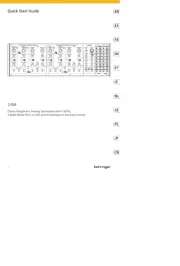
4 Juni 2025
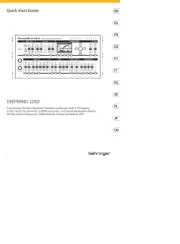
1 April 2025
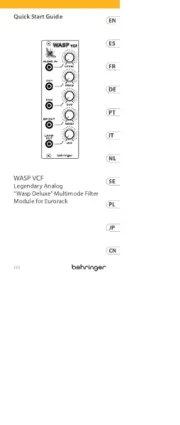
1 April 2025
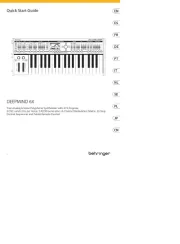
1 April 2025
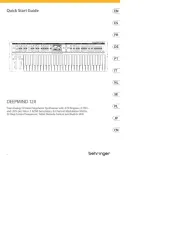
1 April 2025
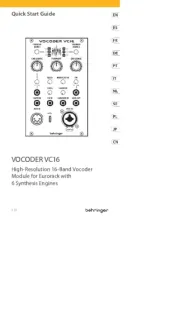
1 April 2025
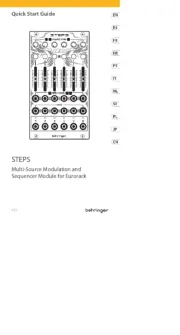
30 Januari 2025

2 Januari 2025
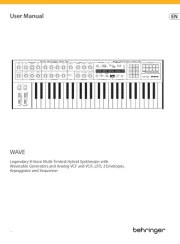
2 Januari 2025

2 Januari 2025
Handleiding Synthesizer
- Sequential
- Sonicware
- (Recovery)
- Twisted Electrons
- Pioneer
- ELTA Music
- Soma
- Vermona
- AAS
- Studiologic
- Casio
- Motas Electronics
- Ferrofish
- Meebleeps Machines
- Nystrom
Nieuwste handleidingen voor Synthesizer

3 September 2025
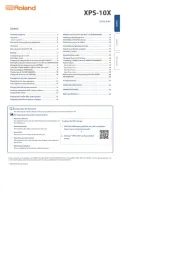
1 September 2025

30 Juni 2025

10 Juni 2025
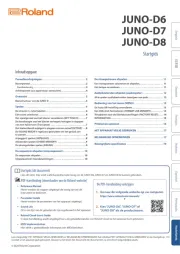
16 Mei 2025
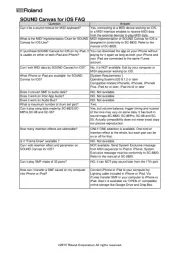
13 Mei 2025
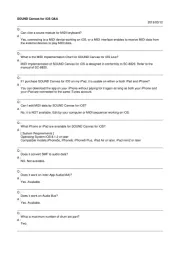
13 Mei 2025
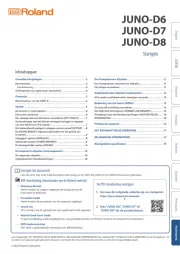
12 Mei 2025

12 Mei 2025
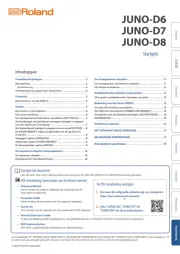
12 Mei 2025